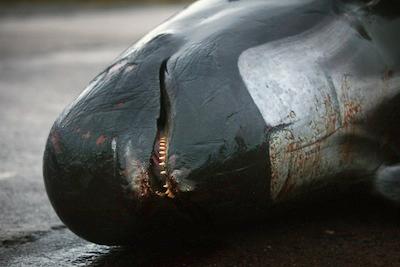Whale ear wax tells the tales of the oceans, study suggests
A dead pilot whale beached on May 21, 2011 in Scotland.
Scientists say that a whale's ear wax can tell us a great deal about the ocean.
The build-up of wax can show everything from feeding habits to the level of ocean pollutants it encountered to its hormonal changes.
As whales likely have trouble cleaning their ears, their wax helps record the history of their lives.
The study analyzed the ear wax from a dead blue whale that washed ashore in California in 2007.
Researchers from the Santa Barbara Museum of Natural History collected foot-long column of wax from inside the skull of the dead whale and saved it.
Ear wax in whales adds layers called "lamina" every six months, which helps to tell the age of the whale.
The whale in this study was 12 years old when it died and scientists were able to determine that it reached sexual maturity around 113 to 126 months.
Scientists also found a number of different pesticides in the whale, including DDT.
"It's been 30-plus years since we've stopped using this compound," said Sascha Usenko, an environmental scientist at Baylor University, to NPR.
"but to still see it showing up at such high concentrations — one of the dominant chemicals we see — was surprising."
The whale encountered most of the pesticides at a young age, suggesting they may have been passed down by his mother.
Mercury contimination was also high during certain ages, which may also mean that it was swimming through more polluted waters at a certain age.
The new finding proves that ear wax can tell us more about whales and their lives – that is until giant Q-Tips are invented.
The findings were published in the journal Proceedings of the National Academy of Sciences.
Every day, reporters and producers at The World are hard at work bringing you human-centered news from across the globe. But we can’t do it without you. We need your support to ensure we can continue this work for another year.
Make a gift today, and you’ll help us unlock a matching gift of $67,000!
